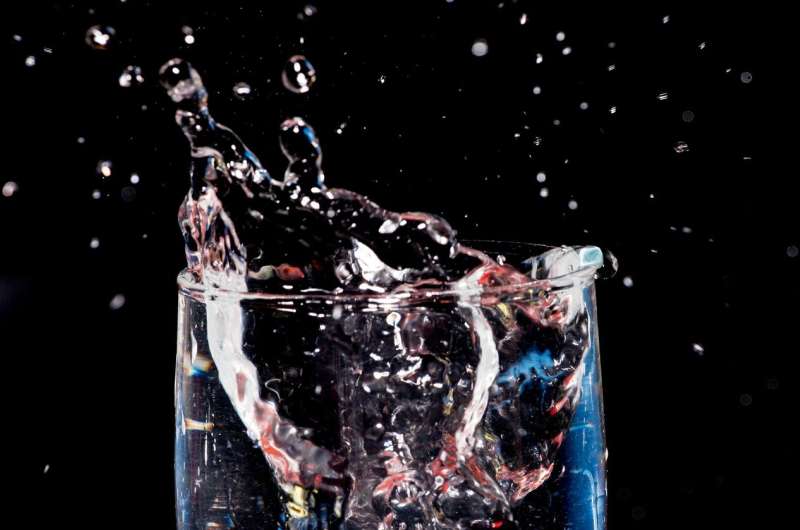Live-streaming ads for alcohol, junk food increased during pandemic

Live-streaming gaming platforms like Twitch can give kids and teens a front-row seat to their favorite players' video game screens, but they also expose them to ads marketing alcohol, energy drinks, and junk food that are endorsed by influencers.
A new Penn State study found that while these ads were already highly prevalent, they also increased substantially during the COVID-19 pandemic.
The researchers found that energy drinks made up the vast majority—nearly 80%—of marketing, but ads for restaurants, soda, processed snacks, alcohol, and candy were also present. Additionally, a rapid increase in ads occurred between March 2020 to November 2020, which correlated with the beginning of the COVID-19 pandemic as much of the world transitioned to spending more time in an online environment.
Caitlyn Edwards, postdoctoral scholar of nutritional sciences, said exposing teens and adolescents to this type of influencer marketing could help shape their thoughts about unhealthy foods and beverages—including alcohol.
"This type of marketing can normalize high-fat, high-sugar and high-sodium foods at a time in young viewers' lives when they're developing eating habits that are going to follow them into adulthood," Edwards said. "We saw an increase, for example, in alcohol branding, which could normalize the idea that alcohol consumption needs to be a regular thing in a viewership that is still underage."
Despite being relatively new, the researchers said live-streaming platforms like Twitch, Facebook Gaming and YouTube Gaming have risen quickly in popularity—with Twitch alone reporting having more than 30 million people engaging on their platform each day. Almost a quarter of accounts on the Twitch platform belong to individuals between the ages of 13 and 17 years old.
On these platforms, viewers can watch and communicate with gamers as they play video games in real time, as well as chat with other viewers. Once gamers get large enough followings, they are sometimes contacted by companies to promote their products as part of a sponsorship.
Travis Masterson, assistant professor of nutritional sciences and director of the Health, Ingestive Behavior, and Technology lab said because of the unique nature of sponsorship marketing, less is known about its effects on viewers.
"When an influencer is promoting a product, there's interaction happening between the influencer and their viewers that isn't there with traditional print or visual ads," Masterson said. "And because viewers feel like they have a relationship with the influencers, they may be more willing to buy these products as a way to help their influencers succeed and make money from these sponsorships."
For the study, the researchers compiled a list of more than 300 food and beverage product names that have been shown to have high rates of food and beverage marketing tactics on social media platforms. Products were divided into six categories: Alcohol, candy, energy drinks, processed snacks, soda and restaurants.
The researchers then wrote a data mining program to interact with an analytics service that finds and counts the number of times product names are used in the stream titles of content on Twitch, YouTube Gaming and Facebook Gaming, as well as the numbers of hours these streams are watched.
After analyzing the data, the researchers found that energy drinks were by far the most common products advertised—appearing on 74% of streaming titles.
"This could be problematic if increased exposure to these ads does correlate to increased consumption," Edwards said.
The researchers said it's important for parents to be aware of what their children are being exposed to if they are regular viewers of live-streaming platforms. But Masterson said the results—recently published in the journal Public Health Nutrition—also have implications for future regulation.
"Regulation of food marketing in the US is essentially non-existent and tends to lag far behind new forms of technology and media," Masterson said. "But it's something that could be considered, especially since there's a high number of young viewers on these platforms and prior research has found that food ad exposure among youth can affect changes in consumption."
In the future, the researchers said they will continue to study the effects of marketing on live-streaming platforms, including if—and to what extent—ads influence behavior, eating habits and consumption of foods and beverages that are being marketed.
Sara J. Pritschet, Penn State; Keally Haushalter, Penn State; John W. Long, Penn State; and Catherine C. Pollack, Dartmouth College, also participated in this work.
More information: Caitlyn G Edwards et al, Prevalence and comparisons of alcohol, candy, energy drink, snack, soda, and restaurant brand and product marketing on Twitch, Facebook Gaming and YouTube Gaming, Public Health Nutrition (2021). DOI: 10.1017/S1368980021004420



















